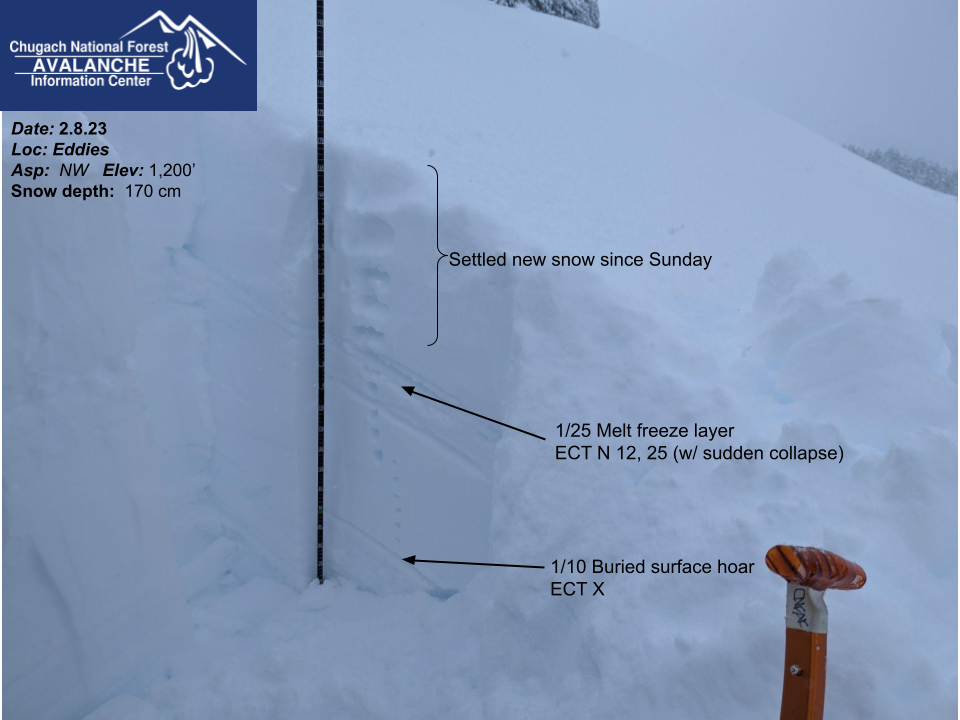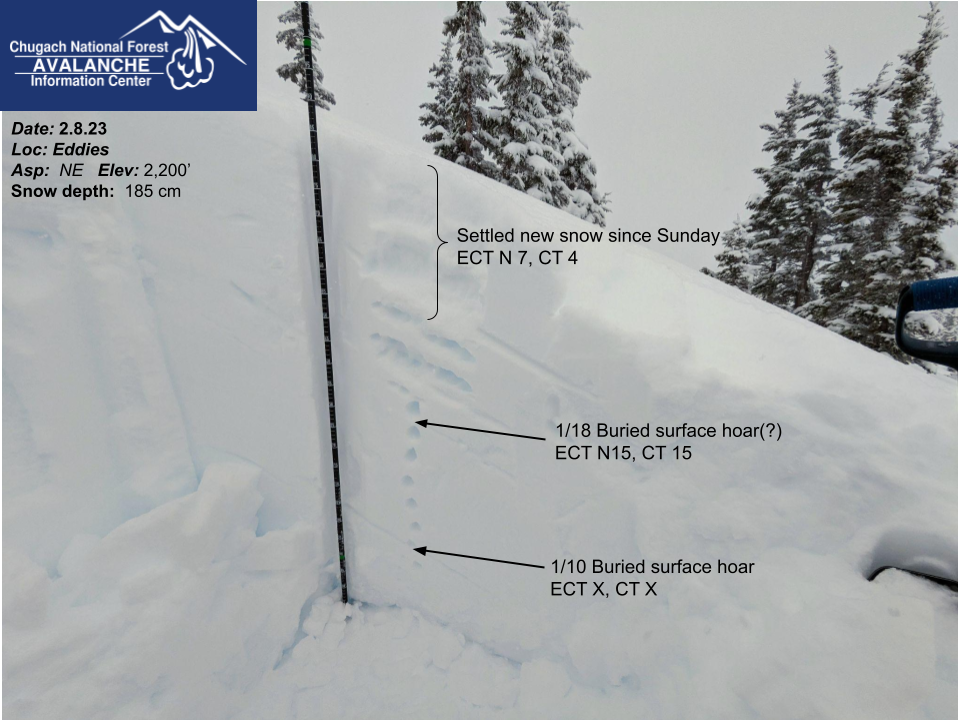| Recent Avalanches? | Yes |
| Collapsing (Whumphing)? | No |
| Cracking (Shooting cracks)? | No |
Observation: Turnagain
Location: Eddie's
Toured up to about 2500′ on Eddie’s to see how the new snow was bonding to the old snow at different elevations. We also wanted to check out the distribution and reactivity of the 1/10 buried surface hoar.
During a brief clearing period we saw part of an avalanche crown in Todd's bowl. It looked like it was a few days old and was partially filled in. The portion of the crown we could see was the lookers right flank which ran along a rocky rib in the middle of Todd's bowl at about 3400'.
Periods of heavy snowfall accumulated about 2-3" of snow by the end of the day. We had occasional breaks in the clouds that would give us better lighting and views of the surrounding peaks. There were no obvious signs of wind or transport of the light new snow.
About 2-4" of light snow covered a 1.5" thick crust below 1000'. Above 1000' the surface was about 6-10" of light new snow. Surprisingly there was a thin crust layer at upper elevations (2500') just below snow surface.
We dug three pits...
Pit 1: At 1200' on a NW aspect, total snow height was 5.5'. There was a melt freeze layer from 1/25 down 14" that failed with moderate to hard force in our extended column tests (ECT N 12, 25). This layer did not propagate but it did have a sudden collapse character when it failed. We also found the 1/10 buried surface hoar down about 2.5' and had no results in our extended column tests.
Pit 2: Snow was 5.7' deep at an elevation of 2465'. Below the new snow we found a thin crust that was about 2" deep which may be a radiation recrystallization crust from yesterday's sunny weather. Our extended column test failed at 11" deep on the the new/old snow interface without propagation (ECTN13). We were able to locate the large crystals of buried surface hoar 17" below the snow's surface but saw no signs of failure or reactivity during our stability test (ECT X).
Pit 3: At 2126' we stopped mid-ski to dig a pit. Snow at this elevation was little over 6' deep with about 3 inches of light snow that fell during the day. The snow fractured at the new/old snow interface around 1' deep in our stability test (ECTN7, CT4). We had failures without propagation about 1.5' below the snow surface on a layer that might have been the 1/18 buried surface hoar, but we had a hard time finding surface hoar grains in that layer (ECTN15, CT15). At 2.5' deep we found the 1/10 buried surface hoar but did not have any results in our ECT or CT.

Occasional break in the snowfall to get a look at Eddies Headwall.

Layer of buried surface hoar that we found in all three pits

Some glide cracks on the S face of Seattle Ridge across the Eddies lot

Failure in our ECT at the new/old snow interface, but with no propagation.

Low elevation snowpack sturucture, 1200' on NW aspect

20230208_Eddies_22k